Crane for Sale Brazil
Overhead Cranes and Hoists for Sale Brazil, Hot Sale 5 T, 10 T, 30 T
Overhead cranes and hoists for sale Brazil, custom design, economical price. Hot sale 5 ton, 10 ton, 30 ton, 50 ton. Check cranes and hoist projects now.


Overhead cranes and hoists for sale Brazil, custom design, economical price. Hot sale 5 ton, 10 ton, 30 ton, 50 ton. Check cranes and hoist projects now.

Brazil, a country renowned for its rich cultural diversity and stunning natural landscapes, also boasts a thriving industrial landscape. At the heart of many of Brazil's industrial sectors are overhead cranes, essential machines that play a pivotal role in manufacturing, construction, and various other applications. In this blog, we will delve into the world of overhead cranes in Brazil, exploring their types, their significance in various industries, special features tailored to the Brazilian market, and regional insights that shed light on the dynamic nature of crane usage in this vibrant nation.
Brazil's economy has long been fueled by a diverse range of industries, from automotive manufacturing to mining, agriculture, and renewable energy production. This diversity is matched by the array of overhead cranes that power these sectors. Overhead cranes are indispensable tools in the world of heavy lifting and material handling, providing precision and efficiency where manual labor falls short.
The Brazilian market for overhead cranes is robust and dynamic, catering to a wide spectrum of industries with varying needs. These cranes come in various types, each designed to excel in specific applications. From the bustling automotive plants of São Paulo to the towering wind turbines of Ceará's renewable energy sector, overhead cranes are essential components of Brazil's industrial machinery.
The significance of overhead cranes in Brazilian industries cannot be overstated. These powerful machines are the backbone of manufacturing, construction, and logistics operations across the nation. Here's a glimpse of their role in some of Brazil's key industrial sectors:
These are just a few examples of how overhead cranes contribute to the success of various industries in Brazil. Their versatility, reliability, and ability to handle heavy loads make them indispensable tools for the nation's industrial progress. As we journey further into this exploration, we'll uncover the different types of overhead cranes in use, their specific applications, and the specialized features that cater to Brazil's unique market demands.
What are bridge cranes, and how are they used in Brazil?
Bridge cranes, also known as overhead traveling cranes, are a common sight in Brazil's industrial landscape. These cranes are characterized by their elevated horizontal beam, often referred to as the bridge, which runs along parallel runways. Bridge cranes are widely used for lifting and moving heavy loads within manufacturing plants, construction sites, and warehouses across Brazil.
Different capacity options available for bridge cranes
Bridge cranes come in various capacity options to accommodate the specific needs of different industries. From small-scale operations requiring a few tons of lifting capacity to heavy-duty applications demanding several tons or more, bridge cranes can be tailored to handle the weight of industries of all sizes.
Bridge cranes are available in the following two configurations
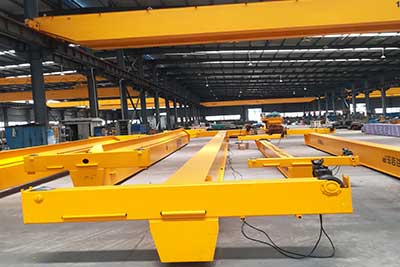
Unique Features:
Benefits:
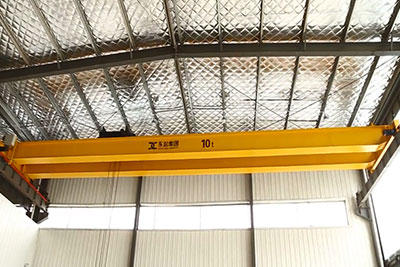
Unique Features:
Benefits:
Gantry cranes are essential in Brazil's industrial landscape, used in sectors such as construction, ports, steel, renewable energy, and manufacturing. They offer versatility, mobility, and heavy lifting capabilities, making them indispensable in material handling tasks. Customized for Brazil's climate and safety regulations, gantry cranes are vital tools driving efficiency and progress across various industries.
What are gantry cranes, and how are they utilized in Brazil?
Gantry cranes, also known as portal cranes, are a vital part of Brazil's industrial landscape. These cranes are characterized by their horizontal beams supported by legs or supports running along tracks. Gantry cranes play a pivotal role in lifting and moving heavy loads in various sectors across Brazil, from construction to manufacturing.
Varied Lifting Capacities
Gantry cranes are available in different lifting capacities to match the specific requirements of various industries in Brazil. They cater to the needs of small-scale operations as well as heavy-duty applications, ensuring efficient material handling for industries of all sizes.
Gantry cranes are available in two configurations:
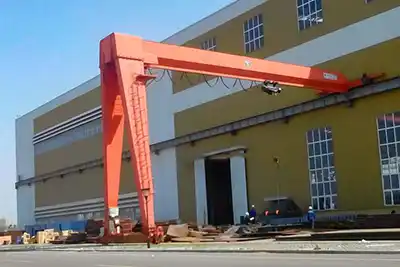
Single Leg Gantry Cranes
Supported by a single vertical leg on each side, they excel in outdoor settings such as construction sites, shipyards, and lumber yards.
Single leg gantry cranes are a type of overhead crane that has only one supporting leg. They are used for lifting and moving heavy loads in a variety of industries.
Features of single leg gantry cranes:
Benefits of single leg gantry cranes:
Applications for single leg gantry cranes include manufacturing, construction, mining, and transportation. They are especially useful in areas where space is limited or where a forklift or other equipment cannot reach. They can also be used for outdoor lifting and moving operations.
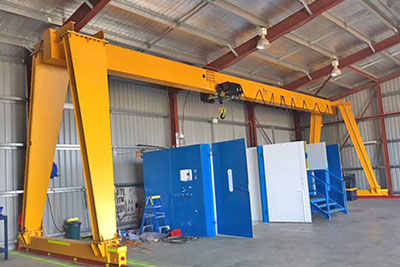
Double Leg Gantry Cranes
Also known as full gantry cranes, they boast two vertical support legs on each side, providing exceptional stability and capacity. They are suitable for both indoor and outdoor applications.
Double leg gantry cranes are a type of overhead crane that has two supporting legs. They are used for lifting and moving heavy loads in a variety of industries.
Features of double leg gantry cranes:
Benefits of double leg gantry cranes:
What are jib cranes, and where are they commonly used in Brazil?
Jib cranes are another integral part of Brazil's industrial landscape, known for their versatility and precision. These cranes consist of a horizontal jib or boom that can rotate 360 degrees, allowing for efficient material handling in confined spaces. Jib cranes are commonly found in Brazilian manufacturing facilities, particularly in areas where space is limited.
Typical applications and industries for jib cranes
Jib cranes find their applications across a range of industries in Brazil. They are often used for tasks such as lifting and positioning heavy machinery, loading and unloading materials, and assisting in assembly processes. From automotive plants to workshops and warehouses, jib cranes play a crucial role in optimizing material handling operations.
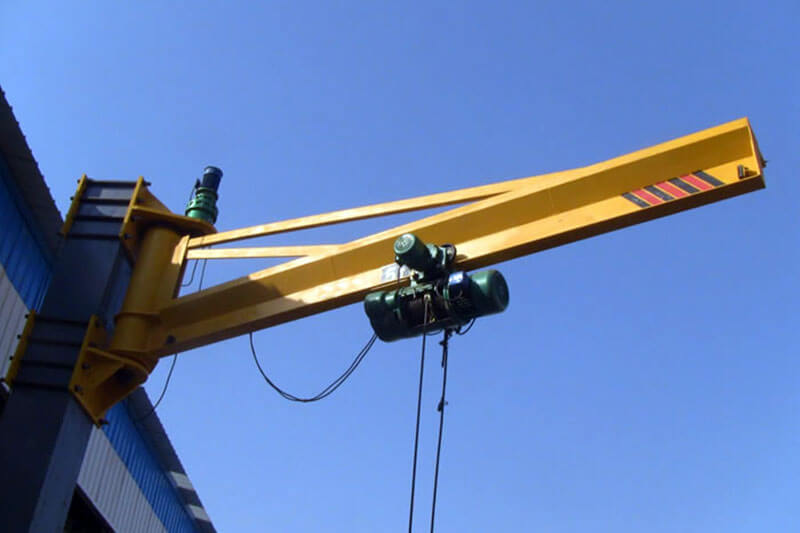
Wall-Mounted Jib Cranes:
These cranes are attached to walls and are commonly seen in workshops and manufacturing cells.
Wall mounted jib cranes are a type of jib crane that is mounted on a wall or column. They are used for lifting and moving loads in a smaller area.
Features of wall mounted jib cranes:
Benefits of wall mounted jib cranes:
Applications for wall mounted jib cranes include manufacturing, warehouses, and assembly lines. They are especially useful for lifting and moving loads in a smaller area, such as loading and unloading materials from machines or transporting materials between workstations. They can also be used for outdoor lifting and moving operations.
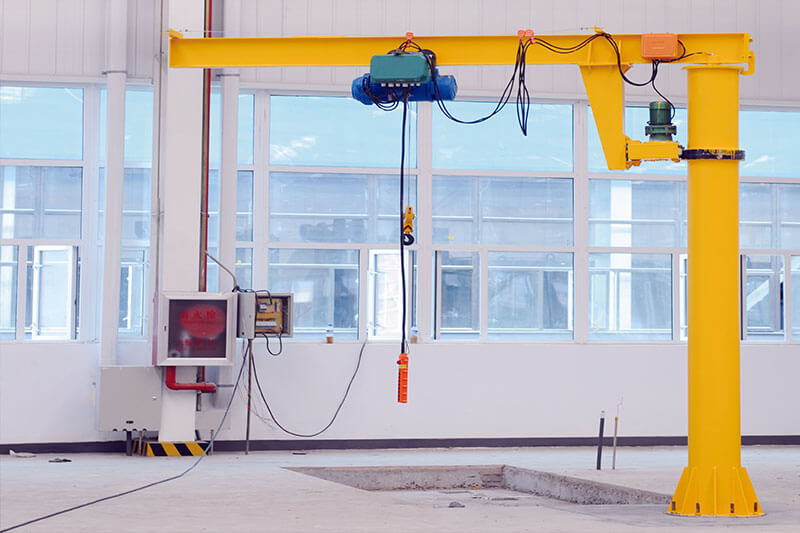
Floor-Mounted Jib Cranes:
Anchored to the floor, they offer increased lifting capacity and range, making them versatile for various tasks.
Floor mounted jib cranes are a type of jib crane that is mounted on a floor or foundation. They are used for lifting and moving loads in a smaller area.
Features of floor mounted jib cranes:
Benefits of floor mounted jib cranes:
Applications for floor mounted jib cranes include manufacturing, warehouses, and assembly lines. They are especially useful for lifting and moving loads in a smaller area, such as loading and unloading materials from machines or transporting materials between workstations. They can also be used for outdoor lifting and moving operations.
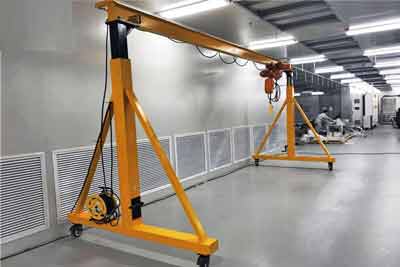
Overview of portable gantry cranes and their applications in Brazil
Portable gantry cranes provide a mobile lifting solution that can be moved to different locations as needed. In Brazil, these cranes are highly regarded for their versatility and convenience, making them suitable for various applications.
Key features and benefits of portable gantry cranes
Portable gantry cranes offer the flexibility to lift heavy loads in different settings, from workshops to outdoor construction sites. They are easy to set up and provide an economical alternative to permanent overhead crane installations. These cranes are prized for their mobility and cost-effectiveness.
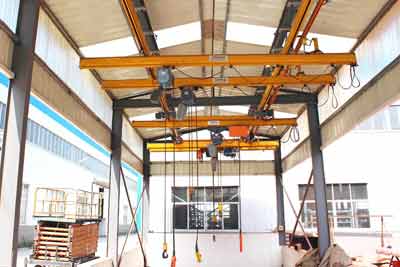
Overview of workstation cranes and their significance in Brazilian manufacturing
Workstation cranes bring precision lifting to the workbench level. In Brazilian manufacturing, these cranes are instrumental in enhancing productivity and ergonomics for workers involved in assembly, fabrication, and material handling processes.
Typical capacities and applications for workstation cranes
Workstation cranes come in various capacities to accommodate different workstations' needs. They are commonly used in industries where precise control of loads is essential, such as electronics manufacturing, small parts assembly, and quality control processes.
These various types of overhead cranes are the workhorses behind Brazil's industrial success, each serving unique purposes and playing a vital role in the nation's economic growth. In the following sections, we will delve deeper into the industrial sectors where these cranes excel, exploring their applications, capacities, and the benefits they bring to Brazil's diverse industries.
Overhead cranes are used in various industrial sectors in Brazil for material handling, and the specific types of overhead cranes used can vary depending on the sector and its requirements. Here's a general overview of the types of industrial overhead cranes commonly used in some of the key industrial sectors mentioned earlier:
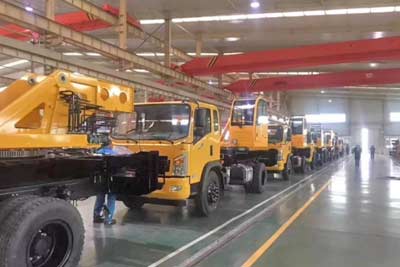
Role of overhead cranes in automotive manufacturing
Brazil's automotive industry relies heavily on overhead cranes to streamline production processes. These cranes play a critical role in moving heavy automotive components, such as chassis, engines, and body parts, efficiently along assembly lines. They ensure precise positioning and sequencing, contributing to the timely production of vehicles.
Specific crane requirements in automotive plants
In automotive plants, bridge cranes with varying lifting capacities are commonly used. Precision and speed are key, making overhead cranes indispensable in maintaining the high production standards of the Brazilian automotive industry.
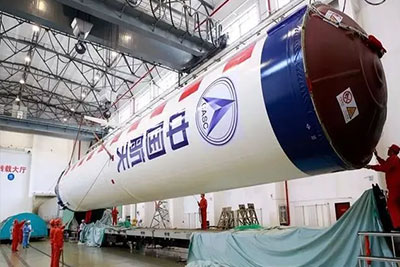
Use of overhead cranes in aircraft manufacturing and maintenance
Brazil's aerospace and aviation sector, led by companies like Embraer, demands precision and safety in every step. Overhead cranes are employed in the handling of delicate aircraft components during assembly, maintenance, and repairs. They ensure that aircraft are built and maintained to the highest standards of quality.
Crane capacities for aerospace applications
In this sector, gantry cranes and bridge cranes with varying capacities are utilized. The crane's ability to handle sensitive aerospace components with care and precision is paramount in ensuring the reliability and safety of aircraft.
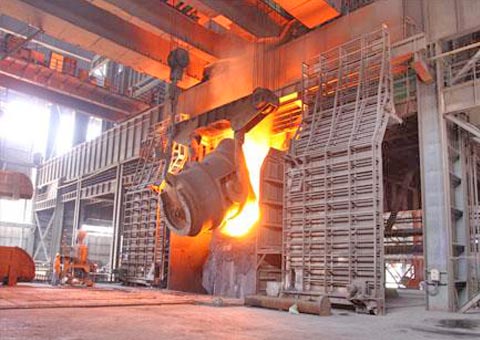
How are overhead cranes utilized in steel production and metalworking facilities?
The steel industry is a core part of Brazil's industrial landscape. Overhead cranes are essential for handling heavy steel beams, sheets, and machinery within steel mills and metalworking facilities. These cranes facilitate material flow and the manufacturing of a wide range of steel products.
Typical crane capacities for heavy metal handling
In steel and metalworking, gantry cranes and bridge cranes with high lifting capacities are the norm. The ability to handle massive loads with precision is crucial for the efficiency and safety of operations.
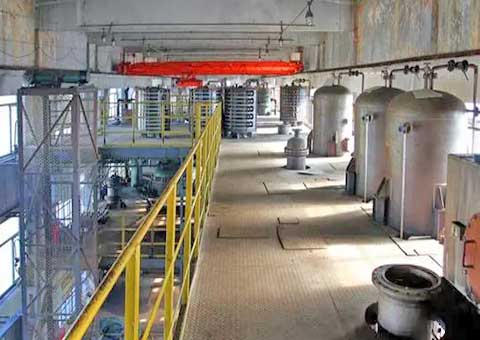
Importance of explosion proof overhead cranes in offshore and onshore oil and gas operations
Brazil's extensive offshore oil reserves have positioned it as a major player in the global oil and gas industry. Offshore platforms, refineries, and exploration sites rely on overhead cranes for lifting and moving equipment in challenging environments. These cranes ensure the safe and efficient operation of Brazil's oil and gas sector.
Compliance with safety standards in the oil and gas sector
Safety standards and compliance with stringent regulations are non-negotiable in the oil and gas sector. Overhead cranes used in this industry are designed and maintained to meet these high safety standards, ensuring the protection of both personnel and assets.
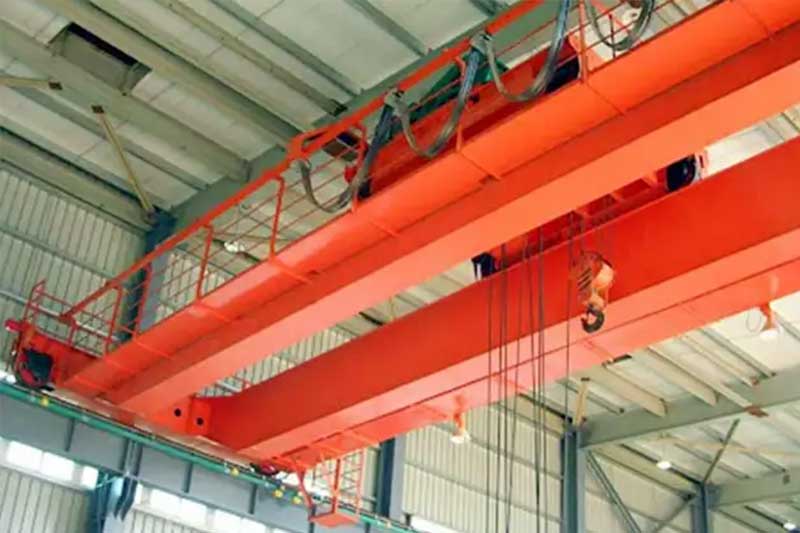
Crane applications in chemical and petrochemical plants
Brazil's chemicals and petrochemicals industry produces a wide range of products, including hazardous materials. Overhead cranes play a crucial role in safely handling and transporting these materials within plants. They are instrumental in ensuring the precise placement of heavy chemical containers and equipment.
Considerations for handling hazardous materials
When it comes to hazardous materials, specialized crane features, such as explosion-proof components and anti-corrosion coatings, are essential. Overhead cranes used in chemical and petrochemical plants are customized to meet these specific requirements.
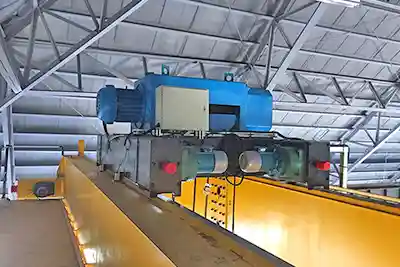
Role of overhead cranes in grain storage and agricultural machinery handling
Brazil is a global leader in agribusiness, and efficient material handling is critical in this sector. Overhead cranes are used in grain storage facilities and for moving heavy agricultural machinery. They contribute to the smooth flow of grains and ensure the maintenance of essential farming equipment.
Customizations for agribusiness facilities
In agribusiness, gantry cranes and bridge cranes are often customized to handle specific agricultural products and equipment. They are designed to withstand the challenges of handling grains and the rigors of outdoor agricultural settings.
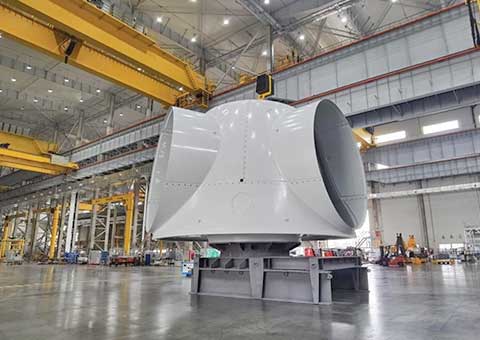
- Bridge Cranes: Bridge cranes are utilized in wind turbine manufacturing facilities for assembling wind turbine components.
- Gantry Cranes: Gantry cranes can be used in biomass and biofuel production facilities for material handling.
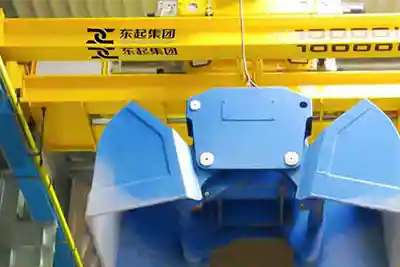
Mining:
- Bridge Cranes: Bridge cranes with grab bucket are employed in mining operations for transporting heavy minerals and equipment.
- Gantry Cranes: Gantry cranes may be used in mining facilities for handling large ore containers.
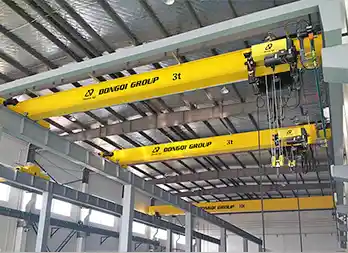
Textiles and Apparel:
- Bridge Cranes: Bridge cranes may be used for handling textile rolls and machinery in textile factories.
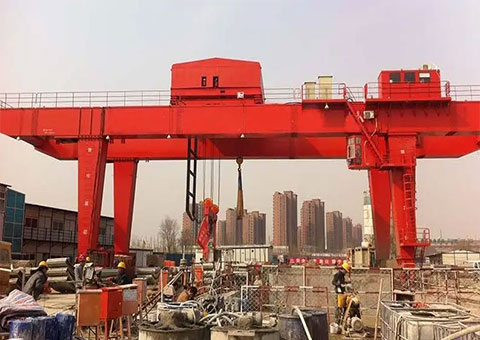
Construction and Infrastructure:
- Gantry Cranes: Gantry cranes are commonly used in construction sites for lifting and positioning heavy construction materials.
- Tower Cranes: While not overhead cranes, tower cranes are frequently used in construction projects for vertical material handling.

Electronics and Information Technology:
- Jib Cranes: Jib cranes can be used for precision material handling in electronics manufacturing and assembly.

Food and Beverage:
- Bridge Cranes: Bridge cranes are used for material handling in food processing and packaging plants.
The choice of overhead crane type and capacity within each sector depends on factors such as the weight of materials to be handled, the layout of the facility, and specific operational requirements. It's important to note that while these are common types of overhead cranes used in various sectors, there can be variations and customizations based on the unique needs of each industry and individual facilities in Brazil.
As we conclude our journey through the world of overhead cranes in Brazil, let's explore the industrial hotspots in this vibrant nation and summarize the significance of these cranes in Brazilian industries.
Key Cities and Regions: Where Industries Thrive
Brazil's industrial landscape is as diverse as its geography. Key cities and regions serve as epicenters for specific industries, and overhead cranes are an integral part of their success.
Tailored Crane Solutions: Meeting Regional Needs
Brazil's vast industrial diversity demands tailored crane solutions. Manufacturers and suppliers of overhead cranes understand the unique requirements of each region and industry. Whether it's designing cranes for heavy metal handling in Minas Gerais or precision handling in São Paulo's electronics sector, customization is key. These solutions ensure that overhead cranes effectively meet the demands of specific industrial clusters.
In the ever-changing Brazilian environment, overhead cranes must adapt to meet unique challenges and comply with stringent regulations. Let's explore the special features tailored to the Brazilian market that ensure safe and efficient crane operations.
How do weather conditions in Brazil influence crane design and materials?
Brazil's vast geographical diversity means that overhead cranes operate in a range of climates, from the humid Amazon rainforest to the arid northeastern deserts. To withstand these conditions, crane designs and materials must be carefully chosen. Corrosion-resistant materials and weatherproof coatings are common features to protect against rust and deterioration caused by Brazil's humidity and occasional heavy rainfall.
Corrosion resistance and weatherproofing features
Overhead cranes designed for the Brazilian market are often equipped with corrosion-resistant coatings, galvanized components, and sealed electrical systems. These features not only extend the crane's lifespan but also ensure reliable performance even in challenging weather conditions.
Overview of Brazilian electrical and safety regulations for overhead cranes
Brazil has strict regulations governing the electrical and safety standards for overhead cranes. These regulations are designed to ensure the safety of operators, workers, and the public. Overhead crane manufacturers and operators must adhere to these standards to operate legally in Brazil.
Certification and compliance requirements
Overhead cranes must undergo rigorous testing and certification processes to ensure compliance with Brazilian standards. Certifications and inspections are conducted by authorized bodies to verify that cranes meet safety and performance criteria. Compliance is critical to prevent accidents and maintain the integrity of industrial operations.
Importance of regular maintenance and inspection in varying environmental conditions
Regular maintenance and inspection of overhead cranes are paramount in Brazil's diverse climate. The humid, tropical conditions can accelerate wear and tear on crane components. Routine maintenance, including lubrication, component replacement, and structural inspections, ensures that cranes operate smoothly and safely.
Crane maintenance schedules and safety protocols in Brazil
Brazilian facilities often follow strict maintenance schedules and safety protocols. Maintenance personnel are trained to detect and address issues promptly. Additionally, safety protocols are in place to protect workers during crane maintenance activities, as safety is a top priority in Brazilian industries.
Crane operator training and certification requirements in Brazil
Crane operators in Brazil are required to undergo specialized training and obtain certifications. Training programs cover crane operation techniques, safety procedures, and compliance with regulations. Certified operators are crucial for safe crane operation and the prevention of accidents.
Ensuring safe crane operation in compliance with local standards
Operators are responsible for following local safety standards and regulations while operating overhead cranes. They must also be aware of the specific features and limitations of the cranes they operate to ensure the safety of themselves and those around them.
In Brazil, special attention is paid to creating an environment where overhead cranes can operate reliably and safely, regardless of the climate or weather conditions. The combination of stringent regulations, regular maintenance, and well-trained operators ensures that overhead cranes play a vital role in the success of Brazilian industries while maintaining the highest safety standards. In our next segment, we'll explore the industrial hotspots in Brazil, shedding light on key cities and regions where specific industries and crane installations are prevalent.
In conclusion, overhead cranes are the unsung heroes of Brazil's industrial landscape. They are the sturdy workhorses that lift and move the materials and equipment that power the nation's diverse sectors, from manufacturing and mining to aerospace and renewable energy. Overhead cranes are not merely machines; they are the backbone of efficiency, safety, and productivity in Brazilian industries.
The importance of overhead cranes in Brazil cannot be overstated. They enable the production of automobiles that traverse the nation's highways, the construction of soaring skyscrapers that dot its urban landscapes, and the harnessing of renewable energy from its wind-swept plains. These cranes are more than just tools; they are the enablers of progress and innovation.
Overhead crane suppliers and manufacturers play a pivotal role in ensuring that these machines are tailored to the diverse needs of the Brazilian market. They understand the nuances of Brazil's climate, regulatory environment, and industrial demands, delivering cranes that meet and exceed expectations.
As Brazil continues to grow and evolve on the global stage, overhead cranes will remain indispensable, supporting the nation's journey towards economic prosperity and technological advancement. With safety as a top priority and innovation as a guiding principle, overhead cranes are set to continue lifting Brazil to new heights.
Heavy duty overhead crane designs in Brazilian steel mills optimize efficiency and safety, ensuring robust performance in heavy-duty industrial operations.
Inquiry Online Leave a MessageCost-effective solutions in Brazilian steel manufacturing utilize overhead cranes for efficient material handling, enhancing productivity & efficiency.
Inquiry Online Leave a MessageOverhead crane buying guide for you. Check our guide on selecting the ideal overhead crane supplier in Brazil to improve efficiency and safety.
Inquiry Online Leave a MessageJib crane for sale Brazil. 500kg jib crane with electric chain hoist & 5 ton jib with rope hoist , 380V60HZ3P, custom jib crane, cost-effective crane price.
Inquiry Online Leave a MessageElectric Hoists for Sale Brazil, economical MD double speed hoist 16t, 5t, 3t, 2t & affordable demag like low headroom hoist NR16t, 10t, 10t, 3t.Buy now!
Inquiry Online Leave a MessageCompact 4-ton floor-mounted jib cranes, ideal for limited indoor spaces. Durable, efficient, and ready for immediate use.
Single girder overhead cranes (2-10 tons) for sale, offering versatile, high-performance lifting solutions across Portugal’s industries.
Case Study: High-Capacity 32-Ton European Style Semi-Gantry Crane for Sale, Perfect for Outdoor Operations in Portugal. Get your semi gantry crane design !
Need Latest Crane Price? Please leave us the required Crane's Capacity, Lifting Height, Span, Travelling Length & Voltage for Quick Quotation.